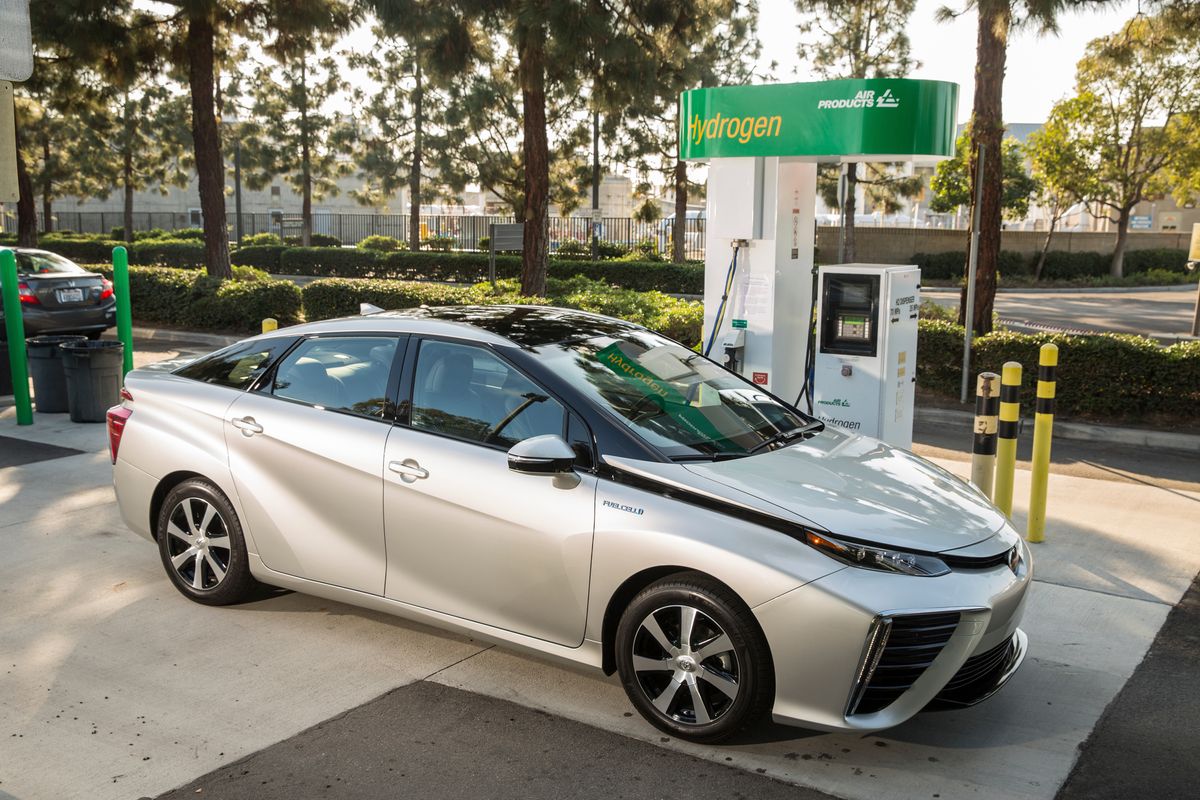2015’s Top Ten Tech Cars: Toyota Mirai
Doubling down on hydrogen fuel cells

Video: moteur nature
Is it a Mirai or a mirage? Skepticism is necessary with hydrogen-fuel-cell cars. Dazzled by the promise of tailpipes that emit only water vapor, a generous driving range, and fill-ups within minutes, people often overlook the downsides: hardly any places to refuel and very high costs for both fuel and vehicles. But like Jason in the Halloween movies, hydrogen is ba-aaack, with several automakers insisting that they’re this close to putting hydrogen cars in showrooms.
The Mirai is the latest trial balloon, coming to California in late 2015 in small volumes at US $58,325 (or about $45,000 after tax incentives). Fuel-cell cars are basically electric cars that replace the battery with a fuel stack that generates electricity via a one-way chemical reaction fueled by hydrogen; when the hydrogen runs out, you pump more in. Pressurized hydrogen reacts with a catalyst (usually platinum); electrons are stripped from hydrogen molecules to power an electric motor; freed protons then recombine with oxygen in the stack, creating good old H20, which helps cool the fuel stack before exiting the tailpipe.
Price: US $58,325
Power train: 113-kW (151-hp) hydrogen fuel cell with AC motor
Overall fuel economy (est.): energy equivalent of 3.9 L/100 km (60 mpge)
Enter the Mirai, the fruit of 20 years of Toyota fuel-cell R&D. Mirai means “future” in Japanese, but hopefully fuel-cell cars won’t all be as aggressively frumpy as this Toyota. Looks aside, the Mirai leaps forward in technology: Toyota says the fuel stack packs 3.1 kilowatts per liter, more than twice the power density at a mere 5 percent of the total cost of its 2008 prototype. That stack of 370 fuel cells weighs just 56 kilograms (123 pounds) and powers an AC electric motor with 113 kilowatts (151 horsepower) and 335 newton meters (247 foot-pounds) of torque—good for a reasonable 9.0-second run to 97 kilometers per hour (60 miles per hour).
The Mirai stuffs 5 kilograms of hydrogen into a pair of carbon-fiber-reinforced tanks at 69,000 kilopascals (10,000 pounds per square inch). That’s the energy equivalent of 19 liters (5 gallons) of gasoline, enough to travel 483 kilometers (300 miles)—about three times the range of a typical electric vehicle. One neat bit is a DC outlet that allows you to tap up to 60 kilowatt-hours when the Mirai is stationary; with a full tank you can power a typical household for six days. Survivalists, take note.
In the United States, the company will offer a $499-per-month lease with $3,700 down. Toyota expects about 200 people in the United States, and 500 more worldwide, to early-adopt this hydrogen baby in 2015. Global production is pegged in the tens of thousands after 2020. To that end, Toyota and the state of California are backing construction of up to 48 hydrogen stations by the end of 2016, with a dozen more planned in U.S. northeastern states. It’s a start. To spur development of the technology, Toyota announced it will allow royalty-free use of nearly 5,700 fuel-cell patents around the world.